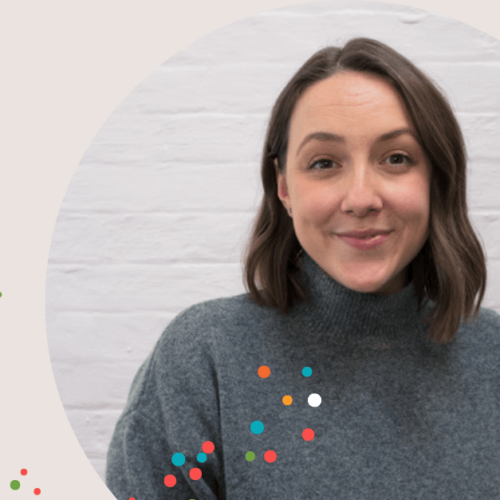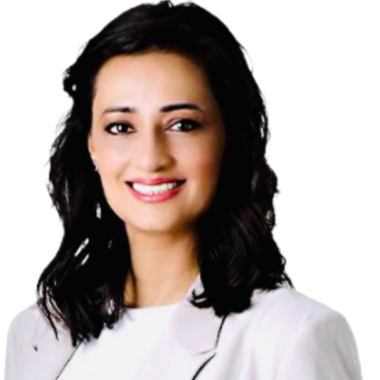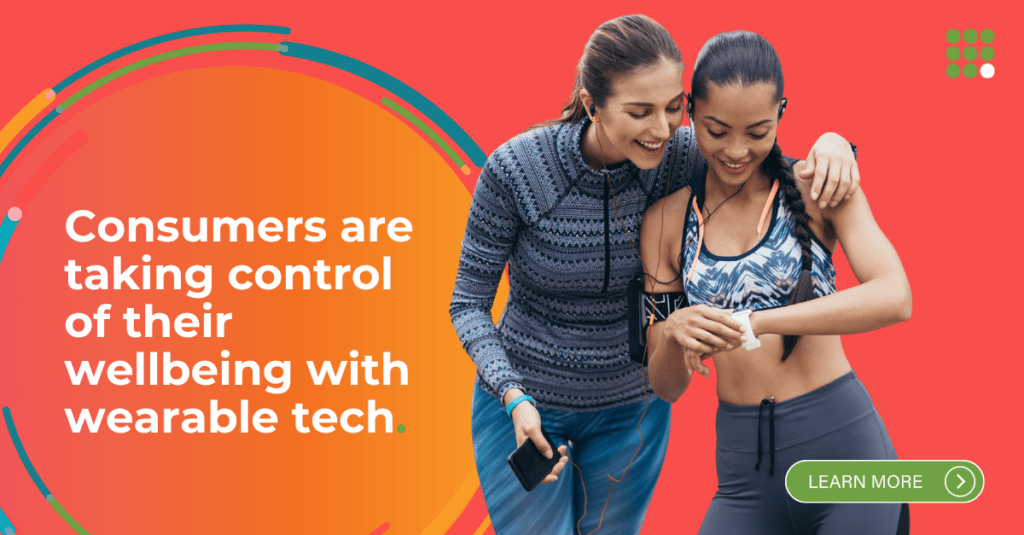For our ‘People in Research’ series, we caught up with Harriet Jowett, a seasoned market research professional who recently joined Kadence International’s UK office as Insight Director and Head of People and Culture after a successful tenure at the Football Association (FA).
With her extensive experience and expertise in the industry, we were excited to hear Harriet’s insights on the latest market research trends, the challenges and opportunities facing the industry, and her vision for Kadence’s future growth and success.
Tell us about yourself, your background, and what brought you to your current position at Kadence International.
I started my career in agency roles and worked in several agencies with clients across retail and FMCGs, banking, tech, and automotive. I then moved into a client-side position at The Football Association (FA), leading the internal Insights team. During my three-and-a-half-year tenure at the FA, I supported stakeholders across the business to generate insight that could enable evidence-based decision-making.
At The FA, we promoted the value of insight and supported stakeholders internally to use research to help them achieve their strategic goals. This included driving ticket sales to matches at Wembley Stadium, improving the hospitality experience, and developing or trialling new grassroots football.
It was a fantastic role, but I wanted to return to the agency world and work with new and different clients to help them achieve their strategic objectives and apply what I’d learned client-side —bringing that strategic alignment of insight into the agency setting.
How do you identify research opportunities with clients?
Identifying new research opportunities depends on the relationship we have with our clients. Through our interactions and the work we deliver with existing clients, we build relationships whereby we can have two-way dialogues and conversations. For these clients, we can become a trusted partner, and once we understand their business goals and objectives, we can pre-empt on their behalf where research might offer value.
With new clients, we must identify from the outset what we can offer them as a global market research agency. How can we differentiate ourselves, and how can we offer value?
Our strength lies in reaching hard-to-reach audiences; we have breadth and coverage across the globe. It’s about demonstrating how this value aligns with the client’s strategic goals and objectives. The first thing is to demonstrate the value of Kadence International and then focus on building and strengthening relationships — that’s where we can become a trusted partner and understand more about our clients and their businesses.
How do you ensure that research findings are communicated effectively to clients?
Having worked in a client-side position, I believe the strategic alignment of insight is critical. We must align our research and findings with a strategic objective or goal so that our clients can directly apply the results.
It is also imperative to communicate our insights effectively, and there are three principles I tend to use.
The first is ensuring clarity of insight. No matter how complex the problem is, my rule of thumb is if I’m walking into a meeting and my client asks me what we found in our research; I should be able to summarise the findings and recommendations in less than five minutes. As a research partner, it is our job to ensure clarity of insight and how it can be used; otherwise, it will be challenging for our clients to activate internally.
Secondly, it’s very tempting to go off tangents with research and get swayed by what’s new, different, or interesting. It is our job to stay on track and align all that we uncover to the objectives at hand.
This is how we can demonstrate our value — linking the insights back to the objectives to help our clients maintain internal stakeholder engagement and buy-in, reinforce the value of research budgets and provide the evidence needed to make strategic decisions.
The third and final principle is being brave in how we present our insights and the recommendations these generate. At times, what we conclude can challenge internal hypotheses or existing thinking. We must be brave in putting forward our opinions and conclusions based on the research we have undertaken. This is where and how we can build trust.
How do you keep up with all the rapid changes in technology?
Keeping up with the latest technology is one of the biggest challenges in the market research industry. We must regularly attend industry conferences, online webinars, seminars, and events to stay connected to new innovations and best practices as much as possible.
While embracing new ideas in technology and AI presents a brilliant opportunity in research, it is also essential to be mindful of where and how we apply them. We need to maintain credibility in the industry and the research we conduct for our clients. We must innovate, try new things, experiment, and explore while retaining the best practice foundations and pillars of research.
We often discuss this with our clients to explore where and how different methodologies can be applied. Sometimes, the client and I will take a leap of faith and see what this can generate.
How do you use data, visualisation, and storytelling in a compelling way with clients?
For me, storytelling in research and how we communicate insight is key. Ahead of any presentation, I always ask myself and my team: ‘If your laptop breaks during the presentation and you no longer have the slides to back up what you need to say, can you tell the story of the research and take your client on a journey to unfold the insights and recommendations?’ If not, let’s look again and ensure we know the story inside out.
Storytelling has been a huge focus area for me, and I have spoken at conferences about using it in research.
So often, we can get lost in detail and need to lift our heads and see the bigger picture. We need to unravel the story, unravel what we’re trying to understand, and be able to tell our clients the story from start to finish.
Do you have a preference for a particular research methodology?
In my early years, I leaned more toward qualitative research specialising in running focus groups, moderating workshops, conducting in-depth interviews, and conducting ethnographic research. When I moved into my client-side role, I switched to quantitative research as we did many quantitative studies in-house with internally owned samples. We used analytical tools internally and only worked with partner agencies on more complex studies requiring advanced analytics.
As a result, I’m a mixed-method researcher now, and, truthfully, I don’t have a preference. What’s important to me is identifying the correct method to answer the client’s objectives and budget. There are times when the perfect methodology isn’t feasible from a timing or a budget point of view. So, what can we do within the time frame and budget to deliver the best possible results for our client? This is my golden rule when determining appropriate methodologies and recommending these to clients (while also ensuring best practices, of course).
What unique approaches do you take to designing and implementing a research project that delivers the necessary data and information?
I always propose upfront kick-off meetings and stakeholder engagement opportunities through workshops or one-to-one interviews throughout the project. Not only does this ensure we have buy-in on the project from the outset, but it also allows us to establish any existing hypotheses/questions to incorporate into the project and crucially understand how the research will be used. Having this clarity up-front is key to ensuring that our outputs will be what the client needs.
In your previous roles, you have worked with research agencies like Kadence. What important lessons did you learn from that experience?
The biggest lesson was that proper planning and time up-front for considered design is essential – you only get out of research what you put into it.
The other lesson I learned is that it requires further investigation if the data feels intuitively wrong or doesn’t make sense. So often on projects, some of the most insightful ‘a-ha’ moments come from when something doesn’t feel right, and you keep digging to understand what is at play under the surface. Don’t be afraid to challenge the data and make it work harder!
The third lesson is the importance of clarity, as I mentioned before. Clarity of message allows us to demonstrate the value of our design, analysis, and thinking. It’s the main thing that will keep clients engaged in the value of research.
How do you engage stakeholders to ensure their voices are incorporated into the research process?
It helps to engage with the stakeholders upfront and, if time permits, to take the opportunity to keep them on the journey with you, especially with longer projects that might take multiple months to deliver. It is critical to reengage with them at different points to keep the project top of their mind as things constantly change in clients’ businesses.
What makes your new role at Kadence exciting?
I am excited to have returned to the agency world and am able to apply what I learned in a client-side setting to help a diverse range of clients achieve their strategic objectives.
The other part of my role is heading up People and Culture. This is a new area for me but one I’m very passionate about. I’ve always enjoyed managing and leading teams. I strongly believe developing others by providing opportunities to expand their skill sets and knowledge in a safe and collaborative environment is critical.
At Kadence International, we have five core values of the culture we aim to live and breathe daily. Since joining the team, I have run 1:1 interviews with all team members to understand if we are doing this and, if we’re not, why and what we can be doing differently. Following these 1:1s, I’m currently working with the senior leadership team to put some working groups in place and develop action plans for key initiatives aligned with each of our pillars. We already have an incredibly positive, supportive, and inclusive culture, and I’m excited to build on this further and create more opportunities for our teams to grow and develop.
Do you have any advice for someone entering the market research field?
The fascinating thing about market research is that it’s always changing. It’s constantly evolving and becoming more innovative over time. I would advise anyone entering the field to explore and try different methodologies and work with clients across a variety of sectors and in various roles (marketing, commercial, product, design, etc.) It’s the only way you can truly understand the value of market research and how to apply it strategically and commercially. You can also learn a lot if you take the time to listen and build relationships with your clients, and be open to new ideas. Building great networks with people working in other agencies is also a brilliant thing to try and do – it can be a small world in research, and there is so much we can learn and share with each other!
How do you keep the company culture alive in a remote environment?
We’ve got several events in our UK office. We use Slack as the primary tool for connecting our team members when working remotely. There’s always something going on, and we have organised in-person socials. This helps encourage people to get into the office when and where they can. We also have many systems for recognising and rewarding our team members, including shout-outs in our monthly meetings for the small and big things people do on a day-to-day basis. At the core, it’s about ensuring we’re creating a positive, inclusive, and supportive culture where our team members feel they can be themselves and contribute to the company (and the clients we work with).
Your thoughts on what a successful leader should be like.
Leaders need to develop empathy and understanding of their team members. What environments are optimal for their growth? How do we facilitate people’s personal lives alongside their working environments and ensure they have the right balance? How do we ensure we have happy clients and that our employees feel recognised and rewarded for the work they do for our clients?
Great leaders lead by example and demonstrate a commitment and investment in their people and want them to succeed, not because it looks good for their organisation but because it’s good for their teams.
Get regular insights
Keep up to date with the latest insights from our research as well as all our company news in our free monthly newsletter.




 Senior Marketing Executive
Senior Marketing Executive Sales & Marketing
Sales & Marketing General Manager PR -Internal Communications & Government Affairs
General Manager PR -Internal Communications & Government Affairs Vital Strategies
Vital Strategies
 Customer Intelligence Director
Customer Intelligence Director